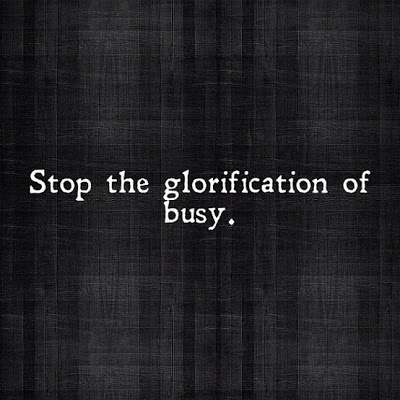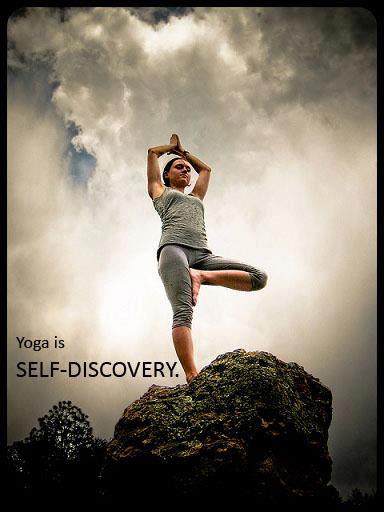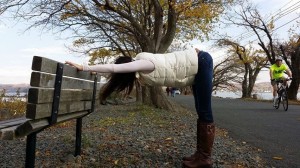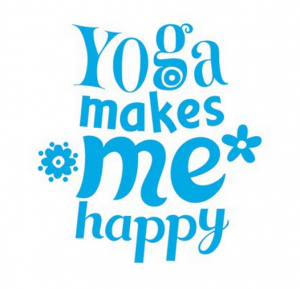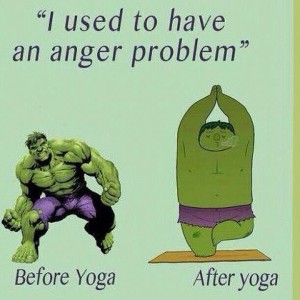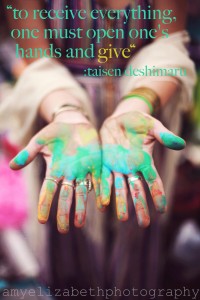It’s ok to breathe and be too!
Tag Archives: yoga therapy
yoga as self-discovery
Living fully
I think Yoga teaches the art of living fully through presence 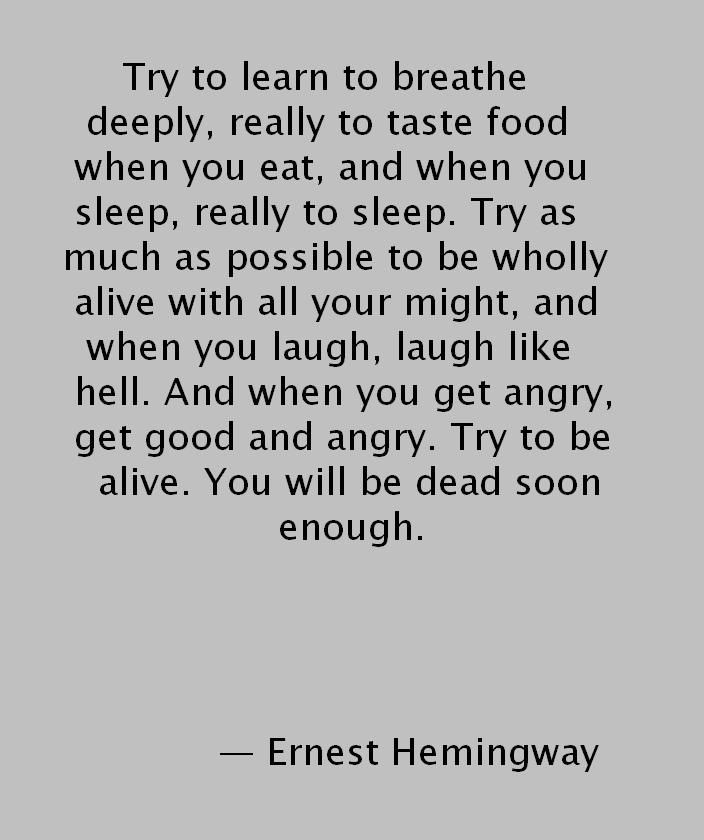
Mindful Shopping
my latest post on the Lole Love Blog
Since it is autumn, so many of us are contemplating more than our navels. We want to see what we will wear and how we will wear it. Shop until we drop, in other words. So how do we modern yogi(ni)s who are steeped in spirituality pack up our purses and head out into the material jungle?
Mindfully, of course!
It seems like no matter what we are ‘shopping for’ we come face to face with our habits. I am reminded of a quote by Gary Kraftsow, well-known Yoga Teacher; “In order to rise above our conditioning, free ourselves from suffering, improve our relationships, or find a deeper meaning and purpose in life, we must ‘go within ourselves’.” It helps to know what your tendencies are. Is your self talk critical, judgmental or affirmative? Do you listen to your instincts or do you let the voice of another over-ride them?
To be able to listen inwardly comes from setting aside time for silence. Cultivating what I like to refer to as ‘Yoga Mind’ gives you a better chance to experience a truer sense of who you are in the present moment. If a store is noisy and the staff is pressuring you, you will need to access this calm in order to make the best choices. At the same time, your own calm may lead you to shop in more pleasant stores ! Training your personality has deeper ramifications, as you shed the layers, coming into more direct contact with Being and Contentment, versus needing, wanting, trying, and all the other ‘ings’ you were shopping for.
I think the times I can look back on purchases that I did not need, and may have a tinge of regret for, are times when I was not ‘in-yoga’. They were moments when I heard but did not listen to myself or I caved into desires that had nothing to do with what I truly needed at that moment.
Truth be told, there are wonderful mindfulness messages in retail shopping. Here are a few tips on how you can bring the ancient practice of yogic mindfulness into the marketplace with you.
*Start with calm. Meditate for a few minutes before heading out. Inward listening under pressure! AUMMMM.
*Set an intention or goal for your trip and check in with it; did you really need a blouse but you are buying pants instead?
*Set a budget if applicable.
The Art of Mindful Shopping
*Ask yourself honestly in the present moment; is this a buy now/regret later?
*Is the purchase a want or a need? If you were focusing on the needs, re-focus.
*Is it a JUST GO FOR IT day? Can you treat yourself?
*Are you able to look in the mirror and love what you see, or is it all negative self- talk?
*Is the sales staff pleasant and helpful or pushy?
*Are you comfortable with how you feel, from the inside to the decision you are making ?
*Remember that at any moment, you can breathe in and out, take a walk, take your time, and circle back.
The beauty of the Yoga approach to shopping is that it turns us into confident, strong people who make nourishing and positive choices. Life, in this way, whatever you are doing, becomes an art form.
Buyer Be(a)ware…Enjoy!

Rana Waxman
Rana is a Yoga Therapist with over 20 years of experience. Her passion for making sense of the ancient teachings of Yoga in today’s fast-paced world has given her the nickname, the “modern Yogini”..Visit www.ranawaxman.com for details. Follow her on Twitter @yoginiqueen and like her Facebook page, RANAWAXMAN.YOGA, to stay connected.
why worry
Brilliant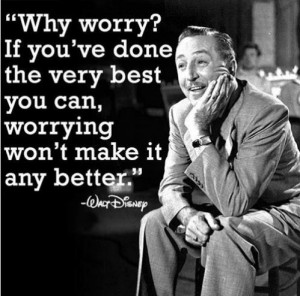 quote, and true…worry breeds fear, and relaxation builds trust; for today’s practice try DIVING DEEPLY INTO RELAXATION
quote, and true…worry breeds fear, and relaxation builds trust; for today’s practice try DIVING DEEPLY INTO RELAXATION
Yoga break
It literally just takes a minute to refresh oneself! Check out a fun way to include half downward facing dog into a walk outdoors or try it against the wall after you have been sitting at your computer… minutes add up to magic, even if you only have a few..and my 5 minute mindfulness retreat will set your focus on “calm” …
yoga makes me happy
Very balanced practice today! What yoga poses cheer you up?
anger management
Monday…take it on with a calm mind
and perhaps a little help from my Keep Your Cool meditation practice
in order to receive
Sunday is always my day for active recovery through restoratives
Like on an airplane when the stewardess tells you to take the oxygen mask before passing it to others
Yoga Therapy: It’s Not Just “Gentle” Yoga
my latest on yoga therapy posted on MindBodyGreen

The word “therapy” has become a buzzword in yoga. When I tell people I’m a yoga therapist, some teachers ask me what it means, and I’ve had students scrunch up their faces.
Truth be told, 20 years ago we used to speak about yoga as “alternative medicine,” and some teachers who realized yoga wasn’t just a one-size-fits-all treatment started to teach private sessions to address the unique needs and concerns of individuals.
Despite yoga’s popularity today, there’s still a need to educate people about what yoga therapy is. Here are seven things everyone should know:
1. There’s a difference between “gentle yoga” and “yoga therapy.”
“Gentle” yoga seems to imply the pace or level of class as it compares to fast paced vinyasa. Doing a slow Warrior 2 as part of a “take it slow sun salutation” class is different from doing a 90-second Warrior 2, holding a block on the outer hip of the bent leg side against a wall in order to encourage external rotation of the hip. Try it. See if it informs your pigeon pose and then see what you need to do in pigeon to have the pose actually benefit you.
Sometimes students tell me that my class was super challenging because it got them to move underworked areas, and yet super uplifting because they experienced a deeper ease by actively restoring energy to overworked areas.
2. Yoga therapy in a private setting will assess each person holistically.
In yoga therapy, we’re looking at the person behind the posture; we’re teaching a skill rather than cue-ing a pose. For example, to cue everyone to “tuck the tailbone” will not be informative for the student who already walks around like that. Rather, teach students the skill necessary to find their neutral pelvis. This means that in a class of 10 people, you’d see 10 variations or modifications.
3. Yoga therapy is often a better option for people with injuries.
Any given practice can be healing for you, neutral, or harmful. Yes, yoga is intended to bring you into symmetry and balance, but who are you? I’ve spoken with many people who LOVE their classes but still struggle with neck pain. Why? Yoga heals, so maybe their practice is at neutral. Someone recently about a love for flow class, but this person has sciatica. Is there an absence of joint stability in the practice making it energizing-slash-harmful? Then there are people I see who are able to get stronger by learning certain postural skills, and other practices so they feel better off the mat as well.
4. A yoga therapist sees you as multi-layered.
As yoga teachers, we take an unwritten oath to convey yoga safely to our students. Today there are many trainings which take this up a notch, with information on how to use all the practices of yoga to create a purposeful plan for each individual, depending on upon his or her needs. Take pranayama, for example. Teaching the breath is an art in itself. There are practices that energize, calm, and balance. If you are a menopausal woman suffering from hot flashes and you go to a rigorous group class with heating breathing practices, chances are, this will not balance you. So was this really therapeutic for you?
5. Yoga therapy doesn’t sacrifice form for flexibility or for a faster pace.
In yoga therapy, hold times matter. In his book Yoga for Osteoperosis, Dr. Loren Fishman explains that “bone-forming proteins seem to synthesize quite well after 10 seconds of stimulating pressure.” What this means is that if you’re hoping to build stronger bones, you’ll want to hold a pose for more than a breath. He recommends holding a pose anywhere between 8 and 72 seconds. In yoga therapy, you have the opportunity to explore correct alignment for your body with a calm breath, listening to your body to discover what works for you.
6. In yoga therapy, relaxation and restoratives are not bad words.
Relaxation is a discipline in and of itself. Just as we need to shut down a computer so that it can run all the software, the nervous system needs rest and recovery. As for restorative postures, we don’t necessary spend the entire class on them but we might. And if we do, just because you aren’t down-dogging does not mean nothing is happening. Think of these poses as supported recovery, whether you’re an active athlete, a desk jockey, or a busy mom. Flexibility can happen through allowing rather than forcing.
7. We use props to help you heal.
Props matter to us, not to make it “easier,” but to meet your needs, which makes the asana therapeutic. That or we give you another pose. It’s all part of a prescription for your wellness. It also may help with staying safe.
Using time on the mat to open to who you actually are gives great feedback to your mind, body, spirit. This shift in perception will transform your practice into a truly therapeutic one, which is ultimately healing for you.
Photo Credit: Shutterstock.com


